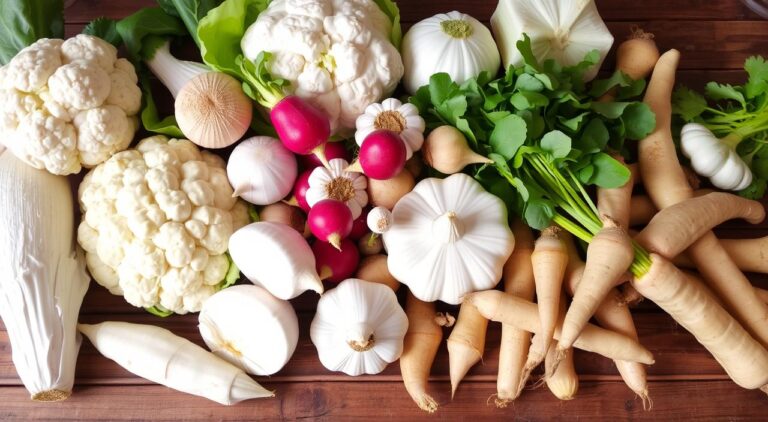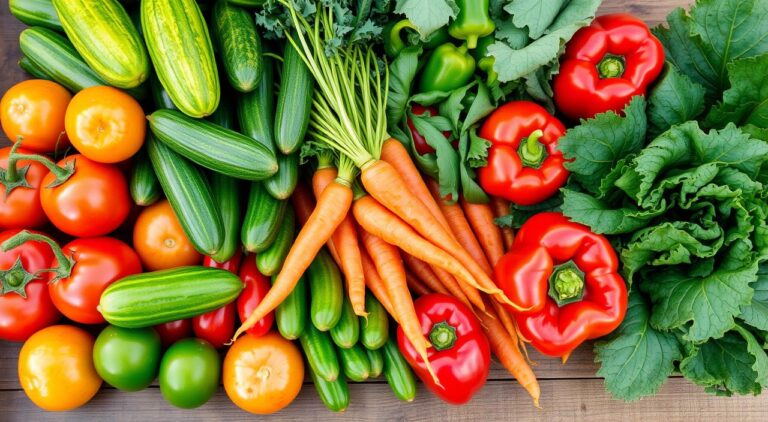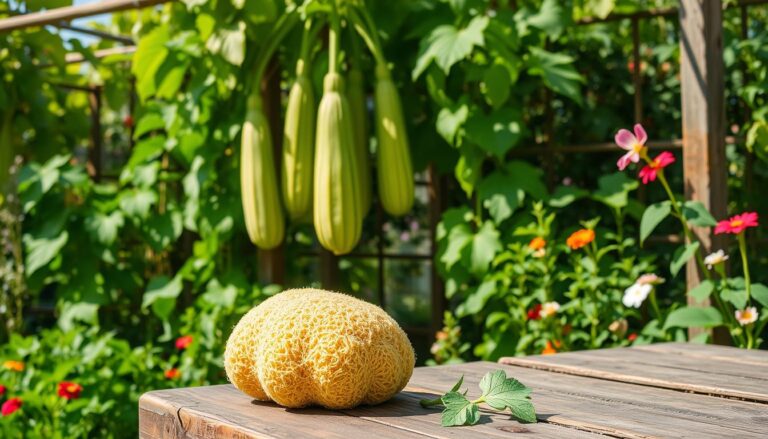Crisco Vegetable Shortening: Baking Essentials Guide
Crisco Vegetable Shortening
Meet your new baking best friend – Crisco Vegetable Shortening. This all-purpose ingredient has been a favorite in American kitchens for over a century. It’s the secret to making flaky crusts, tender cakes, and delicious baked goods. In this guide, we’ll dive into its rich history, how it’s used, and its amazing benefits for your baking.
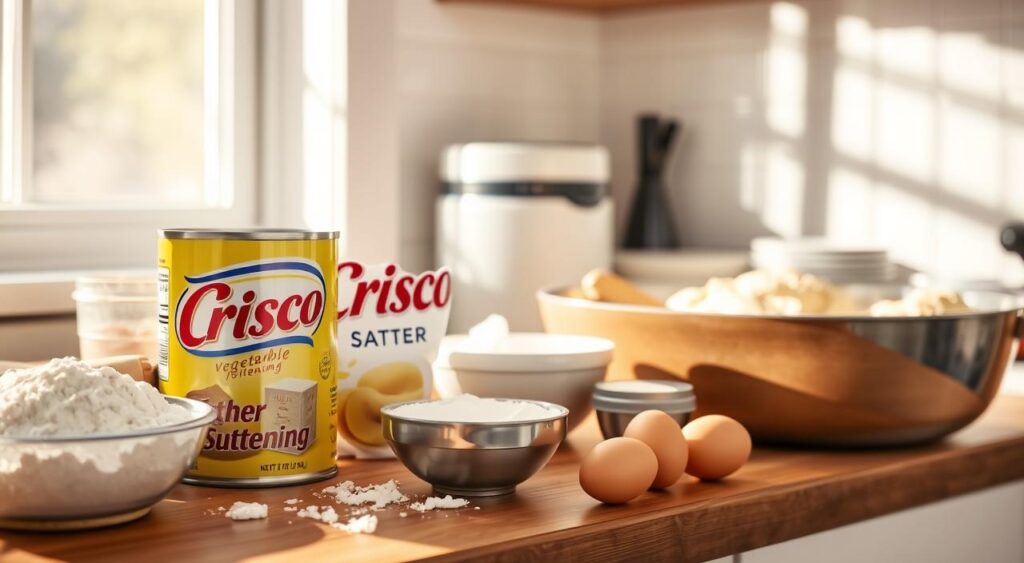
Key Takeaways
- Crisco Vegetable Shortening is a versatile all-vegetable product with a rich history dating back to the early 1900s.
- It offers a unique set of properties that make it an essential ingredient for creating the perfect texture and consistency in a wide range of baked goods.
- Crisco’s all-vegetable composition, kosher certification, and long shelf life make it a convenient and reliable choice for home bakers.
- Proper measuring techniques, temperature control, and mixing methods are key to achieving optimal results when baking with Crisco.
- Crisco’s versatility allows it to be used in a variety of recipes, from flaky pie crusts to moist cakes and tender cookies.
What is Crisco Vegetable Shortening
Crisco has been a favorite in American kitchens for over a century. It was created by Procter & Gamble in 1911. Crisco changed how people baked and cooked by offering a solid fat instead of lard or butter.
History and Development of Crisco
In the early 1900s, Procter & Gamble wanted a cheaper, stable fat alternative. They worked hard and came up with hydrogenation. This turned liquid vegetable oils into a solid, natural shortening. Named Crisco, it quickly became popular for making flaky, consistent baked goods.
Chemical Composition and Properties
Crisco is a solid fat made from hydrogenated vegetable oils, like soybean and cottonseed oils. The hydrogenation makes it solid, perfect for baking and frying. Its high melting point keeps baked goods’ structure and texture.
Types of Crisco Products Available
- Crisco Original Vegetable Shortening
- Crisco All-Vegetable Shortening
- Crisco Baking Sticks
- Crisco Organic All-Vegetable Shortening
- Crisco No-Stick Cooking Spray
Today, Crisco offers many hydrogenated oil products. From the classic Crisco Original to organic and non-stick options, there’s something for everyone. The Crisco lineup meets different cooking needs.
Benefits of Using Crisco in Baking
Crisco vegetable shortening is a top choice for bakers. It’s different from butter and lard because it’s an all-vegetable shortening. This makes it special for baking.
One big plus of Crisco is how it makes crusts flaky and tender. Its high melting point and structure during baking lead to light, flaky pastries. This is key for perfect baking results.
Also, Crisco lasts longer than butter, which is great for home bakers. The crisco vegetable shortening stays good at room temperature for a long time. This keeps your baked goods fresh and tasty.
Plus, Crisco’s all-vegetable shortening taste lets other ingredients stand out. It’s perfect for recipes where you want the true flavors to shine.
“Crisco is a game-changer in the world of baking. Its unique properties and versatility make it an essential ingredient for achieving consistently excellent results.”
Using Crisco in your baking can make a big difference. It’s great for flaky pie crusts, tender biscuits, or fluffy cakes. It helps you get the perfect texture and flavor every time.
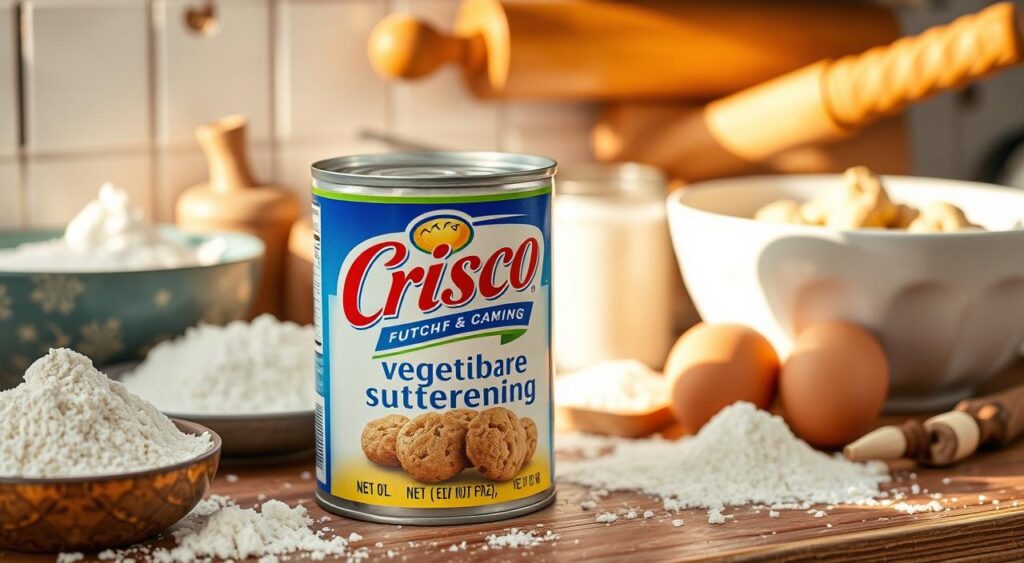
Understanding All-Vegetable Shortening Properties
Baking is all about the right ingredients, and all-vegetable shortening, like Crisco, is key. Knowing how it works helps both home bakers and pros get the best results.
Melting Point and Temperature Control
Crisco’s melting point is higher than butter’s. This means you can control the temperature better when baking. It stays solid at room temperature, giving baked goods structure and texture. But it melts at a lower temperature than butter, making it easy to mix into doughs and batters.
Storage and Shelf Life
Keeping Crisco in a cool, dry place is crucial. It should be away from sunlight. Stored right, Crisco lasts up to two years, ensuring consistent baking results.
Kosher and Pareve Certification
Crisco is kosher and pareve certified. This makes it great for bakers with special dietary needs. It’s perfect for both dairy and meat dishes, opening up more recipe options.
| Property | Crisco Vegetable Shortening |
|---|---|
| Melting Point | Higher than butter |
| Shelf Life | Up to 2 years when stored properly |
| Certification | Kosher and pareve |
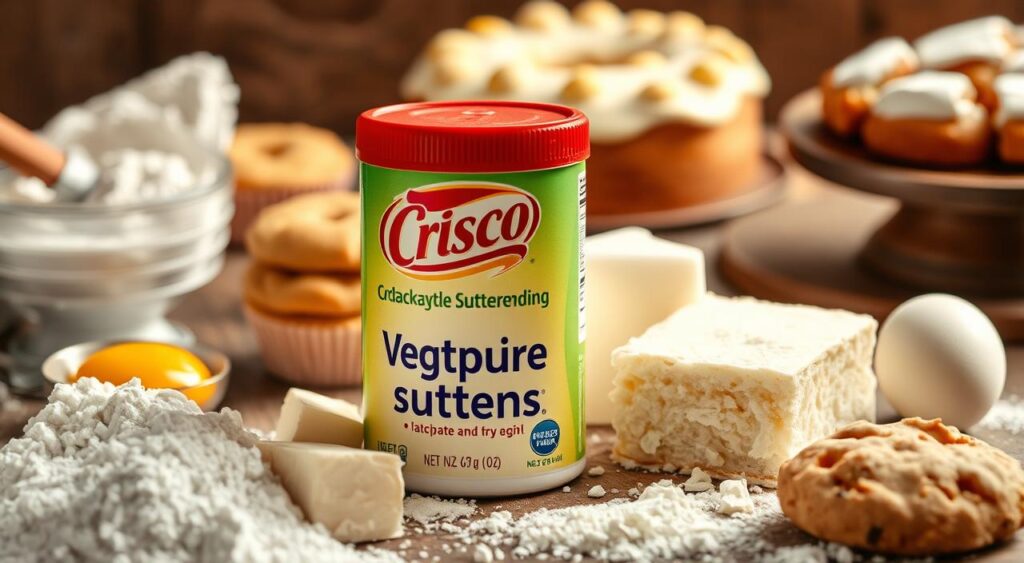
Understanding all-vegetable shortening’s unique traits lets bakers make the most of Crisco. They can create tasty, consistent baked goods for many dietary needs.
Best Practices for Baking with Crisco
Using Crisco vegetable shortening in baking requires some best practices. These include precise measuring, controlling temperature, and effective mixing. Let’s dive into the best ways to use this versatile ingredient in your baking.
Measuring Techniques
Getting the right amount of Crisco is key. Pack the shortening firmly into the measuring cup or spoon. Make sure there are no air pockets. Then, level off the top with a straight edge for an exact measure.
This careful approach ensures your baked goods have the perfect texture and consistency.
Temperature Considerations
Temperature is important when working with Crisco. It should be at room temperature before mixing. This helps it blend well with other ingredients.
Don’t melt the shortening, as it can change the texture of your baked items. If a recipe calls for chilled Crisco, refrigerate it until you’re ready to use it.
Mixing Methods
Learning to mix Crisco correctly is essential. For flaky pie crusts or tender biscuits, use a pastry blender or your fingertips. Cut the shortening into the dry ingredients until it looks like coarse crumbs.
For cakes and cookies, cream the Crisco with sugar until it’s light and fluffy. Then add other wet ingredients. This ensures the Crisco is evenly distributed, giving your baked goods the right texture.
FAQ
What is Crisco Vegetable Shortening?
Crisco is a solid fat made from vegetable oils. It was created by Procter & Gamble in 1911. It’s used in many baking recipes because it’s reliable and versatile.
What are the benefits of using Crisco in baking?
Crisco makes baked goods better in several ways. It gives them a flaky texture and a longer shelf life. It’s also a healthier choice than butter or lard because it’s trans fat-free.
Is Crisco Kosher and Pareve certified?
Yes, Crisco is certified Kosher and Pareve. This means it’s okay to use in both dairy and non-dairy recipes. It also meets many dietary requirements.
How should Crisco be stored and what is its shelf life?
Keep Crisco in a cool, dry place. Avoid direct heat or sunlight. If stored right, Crisco lasts up to two years. Always check the “best by” date for the best quality.
What are the best practices for measuring and using Crisco in baking?
Use the “spoon and level” method to measure Crisco. This means scooping it into a cup and leveling it off. Also, make sure Crisco is at room temperature or slightly warmer for best results.

